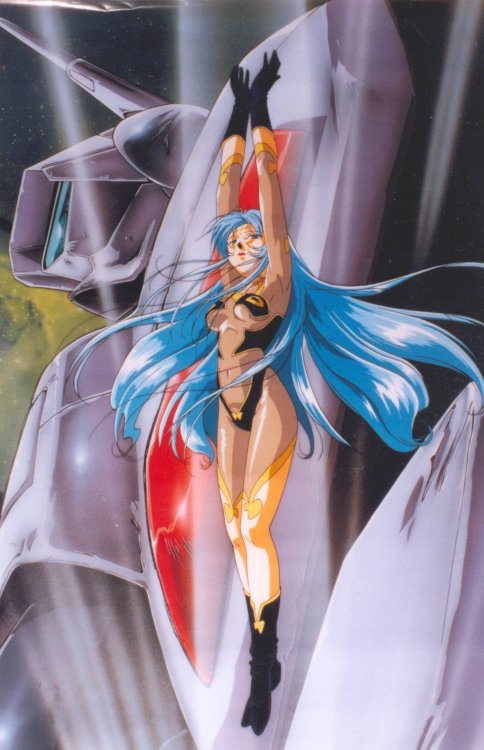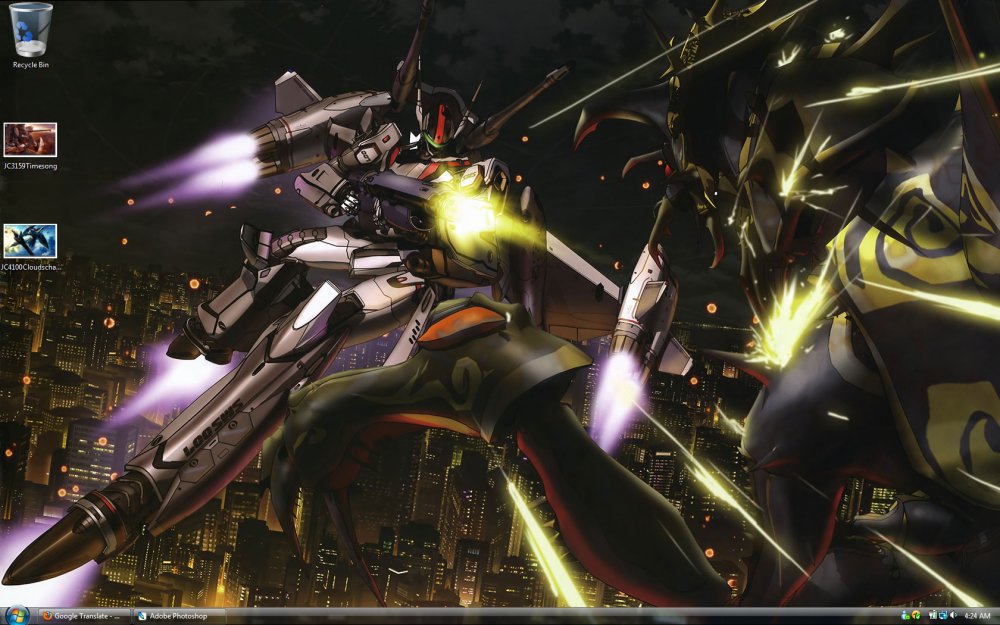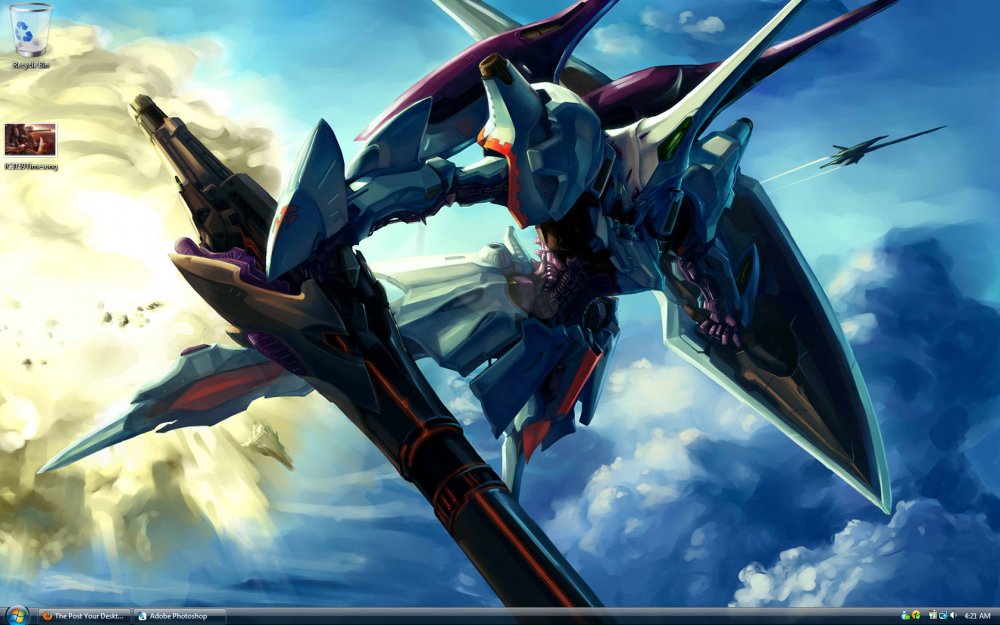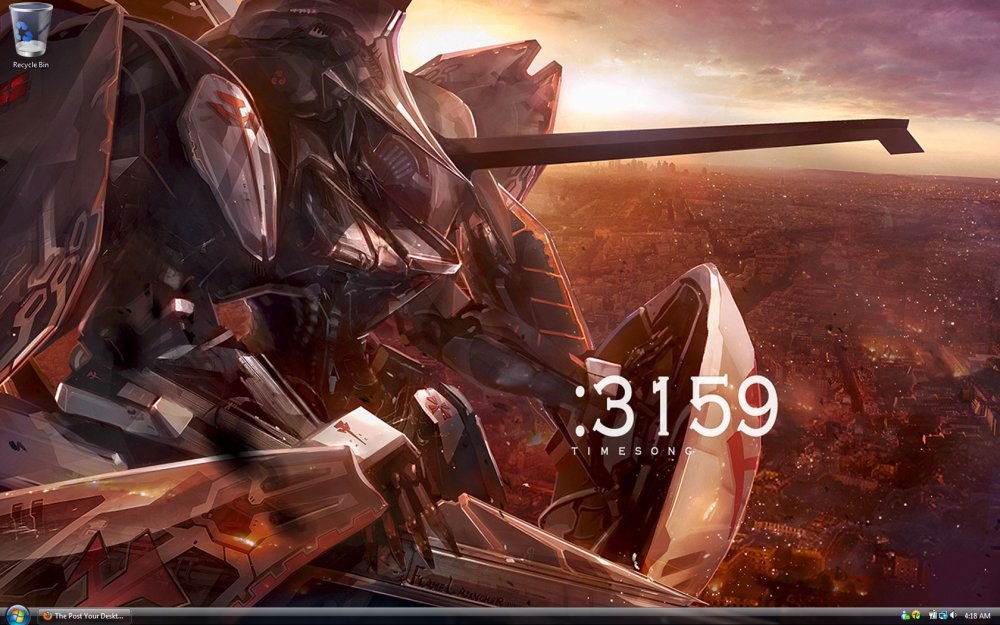-
Posts
13879 -
Joined
-
Last visited
Content Type
Profiles
Forums
Events
Gallery
Everything posted by Seto Kaiba
-
Possibly. The VF-1D is the same basic design as the other VF-1 craft and is a trainer (which would likely include Super and Armor training). But since we always must be wary of using common sense over adherence to the letter of an as yet unidentified canon law, we cannot say for certain that a VF-1D can be equipped with a GBP. As for the toys, I've seen pictures of a GBP equipped VF-1D Yammie, but that doesn't mean anything official To expand on Mr March's answer a bit, we can say with some certainty that most of the standard variants of the VF-1 Valkyrie (-A, -J, -S) can use the GBP-1S protect armor packs. Obviously, the -J model is shown using them in the TV series and DYRL, while the video game adaptation of Macross: Do You Remember Love? (PS) shows the VF-1A and VF-1S using them as well. In the official timeline for what is now the parallel world continuity of Macross II: Lovers Again, the OVA's creators explain why the VF-1J was the only variant shown to equip the GBP-1S. As part of their answer, they state that the packs were initially only compatible with the -J, the other variants were later modified to interface with them as well. So, while it's not strictly applicable to the main timeline, there are some official sources that establish that the VF-1D can use the GBP-1S protect armor. EDIT: There's also a black VF-1A shown using protect armor in episode 27 of the TV series.
-
Despite all of the obvious contradictions in the dialogue that establishes its existence, Harmony Gold maintains that the SDF-2 does exist in Robotech. They handwave aside all of the contradictory theories and Comico's nonsensical depiction of a second ship in the lake standing back to back with the SDF-1 with an explanation that boils down to "We don't know either... but that poo's still official". Oh, no... that internal monologue about his gloves is entirely the work of the comic's author(s). After all, there's no such thing as a faithful adaptation of Robotech out there. Every author who's ever gotten their hands on a pre-existing Robotech title has had a bizarre compulsion to present how they would've done it rather than how it actually happened in the series.
-

Variable Fighter Master File VF-19 Excalibur
Seto Kaiba replied to nexxstrait's topic in Movies and TV Series
Eh... I doubt we'll see much more of Master File beyond a possible VF-25 Messiah book which, as you said, should be a slam dunk in terms of sales if they release it around Macross Frontier: the Wings of Goodbye's debut. Odds are they'd go the safest route and just lump the YF-24, VF-27, and possibly the VF-171 in there as well. As much as I would love to see this, it's unlikely it'll ever happen since only two of Macross's main characters (Hikaru Ichijo and Mahara Fabrio) have ever flown them in any prominently-featured fashion, and even then it was only briefly. Plus, I'm a bit leery about the idea of Master File's writers doing what they've done for the other two books and coming up with a bunch of new variants and even new super parts. I'm uneasy about the prospect of any more Macross II-isms (like the U.N. Spacy having two different main VFs, one optimized for space and the other for atmosphere) leaking into Macross's main continuity... and a VF-4 with Super parts and/or a S-type head pretty much tops that list. -
Oh, indeed... this is one of many subjects I've discussed with the Harmony Gold employees responsible and come away wondering if, instead of doing a piss-poor job of keeping their franchise afloat, they're doing an incredibly poor job of running it into the ground. As I've been informed by no less a person that Kevin McKeever himself, the reason that they don't update their website is that every single news piece to be posted on the site needs to go through an approval process (presumably involving the company lawyer at some point) before it can be posted. Any proposal to actually improve the content or features on the website itself is immediately vetoed by senior management, who see the site solely as a means to facilitate sales in the store and regard anything Robotech-related which doesn't directly earn profit as a waste. Many suspect that the only reason Harmony Gold sprang for a new server for Robotech.com a few years back was because the old one'd been so far out of its depth that it was starting to affect the point-of-sale system that the store used.
-
Eh... it's been ages since I've bothered to put in a Robotech DVD and give myself a proper "shitsux" headache, but it's probably close enough to the actual narration found in the show to pass muster. Robotech's narrator was a chatty little bastard, that's for sure.
-

Variable Fighter Master File VF-19 Excalibur
Seto Kaiba replied to nexxstrait's topic in Movies and TV Series
Not until you pointed it out... no. It's barely discernible just below and to the left of the '2' in '2050'. -

Variable Fighter Master File VF-19 Excalibur
Seto Kaiba replied to nexxstrait's topic in Movies and TV Series
Yeah... It's a bit of a mystery how those things should connect. One would imagine they would latch onto the same contact points the VF-19F/S's do, and stand upright on the end of the shoulders. It looks like there IS fuel storage in there... a pair of long, narrow tanks running the entire length of the pack... so at least they're not ALL missiles. EDIT: My copy came in today's mail... so no more mooching off Talos's copy for me! -
Actually... there are a few things that could potentially fit that description that we haven't covered yet... there's that ducted-fan type helicopter-looking thing, and the utility cargo ship the Varauta troops were going to use to transport the civilians they captured out of the fleet... but other than that, there's nothing remotely like a troop transport plane. But, as I said on MSN, given the variety of aircraft sitting around at New Edwards, it could just as easily be a vintage plane like a "Mom's Kitchen" or a "Tunny", which may even still be in service in 2040. The thing immediately adjacent to the SB-10 Starwing is clearly a EC-33B Disk Sensor unit... Didn't the idea that it was piloted by Zentradi turn out to be a translation error? If memory serves, the description is meant to be read "8-engine all-wing anti-giant(s) bomber".
-
Oh ho... so it's an extension of the usual penis fixation most of Robotech's most vocal defenders seem to have. That explains rather more than I think I wanted to know. Doing that sort of thing as a bit of harmless fun is all well and good, but is this all they can think of to commemorate the 25th anniversary? Pretty much nothing from Harmony Gold as far as the 25th anniversary... and the fans seem to be emulating their example. About all they've done is a handful of "anniversary edition" podcasts, the majority of which are either just synopses of various parts of the story, or attempts to kiss Tommy Yune's ass and badmouth people. No fan art. No websites. No fan films (though that may be Harmony Gold's fault). There's a definite feeling of anticlimax and failure hanging around the subject of the Robotech anniversary.
-
Let me check my Macross Chronicle binders... if there is, and we haven't covered it, odds are we will at some point in the near future. Macross 7 isn't my area of expertise, but I don't recall seeing anything like an infantry transport helo/tiltrotor. I'll check Chronicle when I get back from dinner and shoot you a PM.
-
Seems that way, yeah... though it is worth noting that one of the most imbecilic retcons found in Tommy Yune's rebooted Robotech continuity was his decision to change the neutron-s missiles from purpose-built weapons of mass destruction to a hastily-converted series of colony ships the UEEF repurposed as an ad-hoc delivery system for the neutron star matter warheads. Except for one ship, all of the incomplete spaceframes for the new class of colony ships that would've replaced them were lost when Vince Grant detonated Space Station Liberty's entire stockpile of neutron star matter warheads. Since all they did was get their asses kicked over and over again, it doesn't look like the inadequate fold drives they had access to were that much of a hindrance to them, since they only rarely got a chance to use them. Under normal circumstances, I'd be thrilled to see the sane members of Robotech's fanbase doing SOMETHING other than trying desperately to convince each other this latest example of Tommy Yune's staggering incompetence proves the franchise is still viable... but seriously, another "VS" contest? Is this really all they have left? Are they honestly so short of things to talk about that their attempts to commemorate the show's 25th anniversary have to include the same sort of hypothetical fight threads which now comprise roughly half of Robotech.com's rapidly dwindling activity? This is no reason to get excited... watching them scrabble around for something to talk about besides fandom drama is just depressing. For the same reason that a person interested in basking in the "awesomeness" of urban decay doesn't go out and bring home a case of syphilis... nothing good could possibly come of it. "possibly last"?! I didn't see anything in there about that... Tell me... when has any Robotech sequel or product appealed to anyone who wasn't already a die-hard Robotech fan? Of course Tommy Yune WANTS to use his story to bring in new fans, but his work has always ultimately been stuff targeted to people who were already fans by an author who is a fan himself... and a fan OF himself for that matter. In true Robotech form, Prelude has no originality... no subtlety... no pacing... no characterization... nothing for anyone who whose expectations were higher than "something with the Robotech name on it that I don't already own".
-
Just out of curiosity, what's that Windows Sidebar app you've got running in the upper right corner? Looks a helluva lot slicker than the resource monitor on my system's Windows partition... Any chance you could be persuaded to post that Ishtar art in the Character Art thread?
-
It's... complicated. Yes, I am talking about the red & white set of alternate colors for the VF-2JA on the Macross Mecha Manual. The odd part is that while its first and, as far as I can tell, only actual appearance is a piece of cover art done for the second issue of Viz Media's Macross II: the Micron Conspiracy, a non-canon sequel to Sukehiro Tomita's official Macross II manga adaptation. Bizarrely enough, while Micron Conspiracy was "100% Made-in-America", the red and white color scheme it put on the VF-2JA seems to have gained some approval from Japanese artists, as it's cropped up in several later pieces of art like this one, which I'm told came from a Japanese-market Macross calendar: Depends which of the Macross II manga titles you're talking about. The original Macross II: Lovers Again manga, which was translated and released as a ten issue comic series in the US, is the official manga adaptation of the OVA. It was written by Sukehiro Tomita and illustrated by Tsuguo Okazaki. Viz's five-issue Macross II: the Micron Conspiracy miniseries is licensed stuff, but produced by American authors in the employ of Viz Media and not really intended to be official.
- 1474 replies
-
- Macross Chronicle
- Macross
- (and 9 more)
-
True... but from what I've heard, it doesn't really address the majority of the issues I'm talking about here... (I've yet to see for myself, since my final order only cleared customs yesterday)
- 1474 replies
-
- Macross Chronicle
- Macross
- (and 9 more)
-
Yeah, I know... the whole "subspace field" thing is a macguffin added to warp drive as a means of helping viewers who didn't major in physics understand how the technology works, and sidestepping the question of how to maintain a bubble of normalized space to contain the ship and generate the forces necessary to distort the fabric of space and move that bubble at superluminal velocities... something modern science still hasn't quite figured out how to carry off. Of course, exactly how the "fold bubble" malarkey in Robotech's "original" series, novels, and comics works is anybody's guess. The explanation for the version seen in the Robotech: the Shadow Chronicles movie is Star Trek's warp drive in all but name... with the only appreciable difference being the use of "fold bubble" in place of "subspace field" or "warp field". (The relevant data can be obtained on page 40 of the Shadow Chronicles artbook)
-
-
Probably not... since neither Robotech nor Macross has ever ascribed any kind of time dilation effect to fold travel. In Macross, (and, if memory serves, Robotech as well) the disparity between the experienced time during a fold jump and the actual time that passes in normal space is the result of time flowing at a much slower pace in the sub-universe the drive manipulates to circumvent the vast distances that would normally be involved in interstellar travel. The differential is reasonably consistent in Macross, but varies from nonexistent to absurd (1/525949) in the various Robotech adaptatons. ... and now you know why the Star Trek franchise has long since declared all of its expanded universe materials non-canon... for the exact same reason Robotech did: the "Expanded Universe" materials are a confused mess written by people who didn't seem to know (or care to know) much about the original work. This is actually nowhere close to the canon explanation of how warp drive (and, for that matter, its real-world theoretical version, the Alcubierre drive) functions. Both concepts actually involve exploiting a loophole in general relativity to circumvent the rule that objects cannot move through space faster than the speed of light by distorting the fabric of space (which isn't bound by the same rules) to move a bubble of space around the ship through space at faster-than-light speeds. Which is unambiguously true in Macross, and very probably the case in Robotech as well. Of course, the most recent depiction completely does away with shortcutting through a sub-universe and behaves very much like the above-described warp (Alcubierre) drive, with a bubble forming around the ship that moves through space at superluminal velocities while remaining in normal space. Even the visual effect from inside the ship is more or less identical to Star Trek's warp drive.
-
Still waiting on my copies of issues 45-50 to be delivered, but from what I've heard from those few folks who've already acquired it, it's a decidedly lackluster sheet, like their coverage of the Metal Siren. No data, and no mention of the alternate white-and-red color scheme from the manga that made its way into a fair few calendars and such. Likewise... but if they do go back and cover the stuff they didn't get to in Chronicle's initial run and add stuff from the Macross Frontier movies, I'd also want them to go back and fix the sheets that had obvious errors in the data blocks (VF-19F/S, VA-1SS, Renegade Armor, etc.), left things as "Under investigation", or left out important info that could've made for much more informative articles.
- 1474 replies
-
- Macross Chronicle
- Macross
- (and 9 more)
-
But not by design... which is, I think, rather more important than that Robotech's "original" TV series had slightly more narrative depth than the teaspoon-shallow story of Transformers Generation 1. In the final analysis, both shows were little more than a means of pushing a toy line on the parents of the viewers. Robotech was an attempt on Harmony Gold's part to ape the market model that Transformers was using to make frankly embarrassing amounts of money. Macek's pet project was doomed from the get-go by the generally low quality of its toy line and the fact that only the first 1/3 of the show was actually watchable. It could be argued that Robotech had the superior quality story, but then it must be pointed out that was not the doing of the show's (re)writers, but rather the quality of the original shows they cannibalized to make Robotech. Once the elements of the "Robotech story" that aren't derived from Macross, Southern Cross, and Mospeada are forced to stand alone (e.g. Robotech II: the Sentinels, Robotech 3000), what you have left is a revolting mess that even Robotech fans are usually quick to disown as a hideous mess unfit for human consumption. Not on the trip out... on the trip BACK there was plenty wrong with it. As soon as they got to Tirol it was damaged beyond repair, and then by pure shenanigans they recovered the SDF-1's fold drive and used that, which helped create the stable time loop that had Minmei as the mother of Zor. Well, the whole "Five Year Fold" thing was something Luceno and Daley came up with to explain why the REF forces never made it back to help the population of Earth when the Robotech Masters invaded, among other things. The current official continuity's answer for it is that the human ships were using salvaged fold engines taken from wrecked or captured alien ships, which were usually not of the best quality or in the best shape. The salvaged drives were inefficient and unreliable, making interstellar travel a real pain in the ass until near the end of the 3rd Robotech War, when humanity's alliances with the Haydonites and Kabarrans gave them the ability to produce new, more reliable fold engines of their own... making fuel consumption the only real limitation on their operation. (Kind of a big limit, when you think about it... considering that the REF had ONE AND ONLY ONE means of producing more, and that it proceeded to get missing before the war's end)
-
Like most any technology in Robotech, the capabilities of the show's fold drives change to suit the needs of the plot and/or the whims of the writer in any given episode or adaptation. Even the depiction of the drive in operation isn't consistent, with most cases using a classic Macross-style fold jump, but several others (including the Shadow Chronicles movie) using a Star Trek-style warp drive. The variance in the time differential between adaptations is pretty extreme too... according to Lisa it was 1:7 in the Macross saga, it was 1:525949 (1 minute = 1 year) in the novels, the pseudocanon Waltrip comics had it instantaneous across intergalactic distances with no differential at all, and RTSC has it as a warp drive with no time differential. Which actually doesn't work... in the Macross Saga it's said that the Robotech Masters made the trip to the vicinity of Earth in a single fold jump that got them close but drained their power reserves, and then wasted YEARS cruising the rest of the distance into the Sol system on sublight. Similarly, in the pseudocanon comic adaptation of Robotech II: the Sentinels, the SDF-3 makes a single, instantaneous fold jump, traveling all the way from Earth to Tirol with no apparent (mentioned) time difference, though it isn't outside the realm of possibility that one COULD have occurred. Eh... having the sub-universe ships depend on for FTL travel sport its own "geography" and obstacles was nothing new when the McKinney novels were being written. It had long since been established as a fact of life for hyperspace travel in the Star Wars universe due to explicit mention in the original movie back in 1977. I haven't read it for myself yet, but I'm told the 1965 novel Dune also included in its setting a means of FTL wherein the extra dimension had its own unique geometry that required the use of special navigators. Coincidentally, in the very same year the first batch of the Robotech novels came out, we also got the forerunner of Warhammer 40,000 (Rogue Trader) that introduced warp travel as riding the currents of a hellish dimension of energy populated by demonic beings that want to swallow your soul and beset by storms, eddy currents, and other phenomena that can isolate whole systems, blow a ship off course, or destroy it outright. EDIT: And it was just pointed out to me by a Star Wars fan of my acquaintance that while the McKinney novels were being published, Star Wars's expanded universe significantly fleshed out the whole hyperspace obstacles thing, even going so far as to introduce new ships that could create obstacles in hyperspace so enemy ships wouldn't be able to jump away. It certainly wasn't a new idea when Luceno and Daley added it to their Robotech novels... and it's astonishingly unlikely that Macross would've copied ANYTHING from Robotech, given that Robotech was and still is banned from Japan by the terms of the license agreements that shat it into being. Didn't they also justify it by first having the SDF-3's fold drive be damaged beyond repair, and then having it swipe/recover the SDF-1's fold drive by pure shenanigans, setting up the stable time loop that ended with Minmei as Zor's mother and all of the familiar characters as the ancestors of the Robotech Masters? The comics played the "fold drive damaged beyond repair" angle, but never got around to any End of the Circle foolishness.
-
Um... actually Harmony Gold gave the old comics, novels, and other stuff the boot a good three or four years before Robotech: Prelude to the Shadow Chronicles #1 came out, but that's just hair-splitting on my part. ^^ In a few discussions I've had and witnessed with Tommy Yune and Kevin McKeever, it was made clear that they did actually have a half-decent reason for making the decision to boot the vast majority of the "expanded universe" material from the continuity. Almost all of the old comics, novels, etc. were made without creative oversight from Harmony Gold, and tend to clash with and contradict themselves, each other, and the so-called "original 85". Quite a few titles were disowned simply because they bore only the most superficial resemblance to Robotech. Declaring the whole confused mess non-canon was a housekeeping action that made the continuity halfway intelligible again and got around all the dead ends and extra baggage the comics and novels created. In practice, I don't think Harmony Gold has ever wanted to separate Robotech from Macross. After all, the overwhelming majority of Robotech merchandise that actually sells is Macross-based, and the Macross Saga is far and away the favorite saga of what remains of the fanbase. The whole ongoing story of Sentinels and the Shadow Chronicles movie centers around the Macross Saga characters. Even now, the most recent batch of retcons and other affiliated garbage is bringing the mecha of the Robotech universe closer to their Macross origins by making them run on nuclear fusion instead of whatever protoculture is this week. *raises hand* Oo! Oo! I know the answer! Pick me! Pick me! Pick me! In all seriousness, the reason we're not going to see any production samples or teasers for Shadow Rising is that the movie is, according to slips from HG and some voice actors (incl. Richard Epcar), the movie is on hiatus. Presumably indefinitely, since our boy Tommy Yune has said that Harmony Gold is sitting on its hands waiting for Warner to un-screw the franchise's reputation so they can get better endorsement deals and have a bigger budget so it won't look like complete crap the way Shadow Chronicles did. By a similar turn of events, we won't be seeing anything like pre-production teaser art or details about the movie itself because the film is, for want of a script, still mired in the earliest phases of pre-production. That's why the only thing they've done to stir up interest is trot Lawrence Kasdan's rejected story treatment out to D-list directors like Sylvain White. Robotech fans should thank their lucky stars it's looking increasingly like Warner just intends to sit on the license until it expires, so that they'll be unable to subject us to a remake of Stomp the Yard with giant robots.
-
Just one was all it took? I was betting it would take at least three before it started getting to you. No, what it is is a byproduct of the unique "creative process" used in the rewriting and editing that made Robotech what it is (a mess). Y'see, the Robotech we all know was not what the show's editors originally intended. They wanted to run dubs of the original Macross, Southern Cross, and Mospeada back to back in some kind of Giant Robot Masterpiece Theater sort of setup. The network said no, and told 'em to splice it together into a single show. The rewriting process was, according to those involved in it, a rather slapdash affair carried out in great haste... with the writers working on several episodes at the same time and not stopping to compare notes. So as a result, the show has a lot of inconsistencies, plot holes, and stuff that just doesn't make sense. Terminology slip-ups happen fairly frequently, as do cases where the original dialogue made it through mostly intact and doesn't line up with the setting (such as RT Bodolza's famous exclamation "This results from protoculture?!", when in the RT rewritten version "protoculture" is a pseudomagical biofuel rather than an ancient civilization). It feels, by in large, like they didn't really waste much thought on it and just wrote what they thought sounded cool at the time... which often degenerates into something startlingly similar to the sort of technobabble more commonly associated with Star Trek (or more precisely, bad Star Trek fan-fiction). The problem is only exacerbated by inconsistencies in the animation itself and the new dialogue's occasional departure from it... like the famous invisible SDF-2 problem they've been talking about ceaselessly for about 25 years now. For the most part, nothing in Robotech is ever actually explained. Even what the Macguffin the whole story is centered around really is is never actually explained, it's just taken as an article of faith by Robotech fans that this mystery substance that is somehow produced by/from magic flowers that have seeds AND spores can be used for everything from powering starships and giant robots to food, medicine, and making people thirty feet tall. One of the things we've been trying to do in this thread is wrangle some kind of logical explanation for why Robotech is worth watching now that the originals are freely obtainable out of the Robotech fans that occasionally come here, or that those of us who are also visitors on Robotech sites encounter in our travels around the net. Thus far, we've yet to find one... every answer we've gotten usually boils down to either nostalgia-powered rose-tinted glasses, ignorance of Robotech's origins (often due to Harmony Gold's attempts to obfuscate the show's history), apathy towards anime either due to ignorance or a profound distaste for other cultures, or blind faith in Harmony Gold as a function of all three. For most, it seems to be like how when you're drinking heavily in a bar and the homely girls get better looking with each shot you do... but instead of whiskey it's childhood memories of the show back when those dubbing practices were considered acceptable. The most vocal (and belligerent) Robotech fans are usually guys in their late 20s or early-to-mid 30s who remember the show from when they were kids. Yeah, but the novels are non-canon... just a drop in the ocean of stuff that was tossed out when Tommy Yune rebooted the continuity. Even before then, the "five year fold" hypothesis to explain the REF's absence from the second war was on pretty shaky ground. Like everything in Robotech, it's an ill-defined macguffin that does whatever the plot needs it to... by the most recent titles (RTSC) it's been retconned into something that basically is just a Star Trek-style warp drive by another name.
-

Variable Fighter Master File VF-19 Excalibur
Seto Kaiba replied to nexxstrait's topic in Movies and TV Series
Yeah, sure thing. (Since the whole thing started from questioning the veracity of the information the VF-19 Master File copied from Chronicle, we probably should've moved the whole discussion to the Chronicle thread back on like page three anyway... the fun we have. ) -

Variable Fighter Master File VF-19 Excalibur
Seto Kaiba replied to nexxstrait's topic in Movies and TV Series
Finally got confirmation that my copy of the VF-19 Master File book shipped today, it ought to arrive by this coming wednesday. Looking forward to having my own copy to examine instead of having to constantly borrow Talos's. -
It's been a while since I last re-watched DYRL (due to video card issues), did he change numbers in DYRL? I know he was 011 in the beginning... maybe it was a simple slip-up? Sketchley's almost certainly right about it being an in-joke/reference though... what with Shin Kudo being 311 in Macross Zero and Hikaru being 011 in DYRL.
- 1474 replies
-
- Macross Chronicle
- Macross
- (and 9 more)




